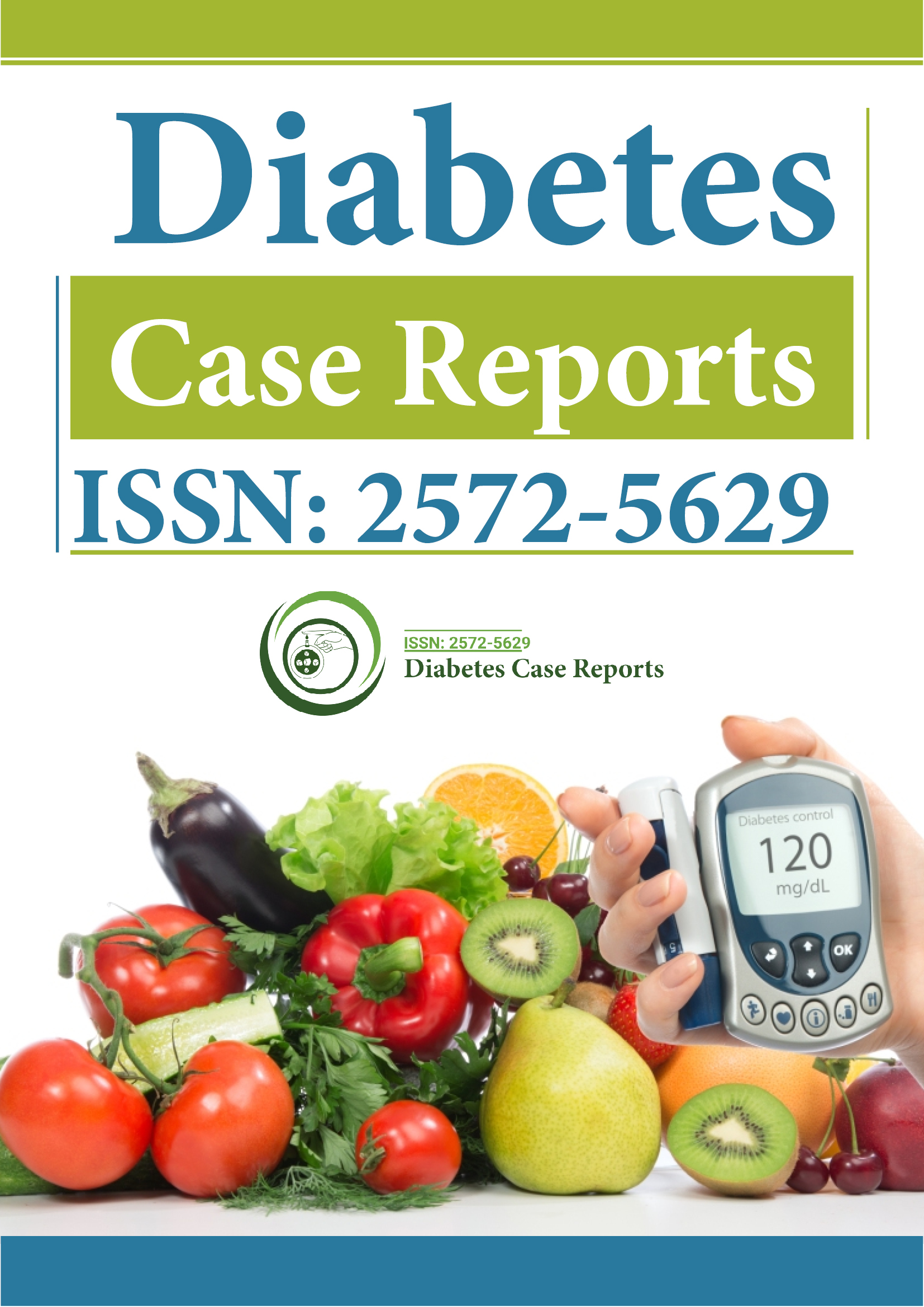Indexed In
- RefSeek
- Hamdard University
- EBSCO A-Z
- Euro Pub
- Google Scholar
Useful Links
Share This Page
Journal Flyer

Open Access Journals
- Agri and Aquaculture
- Biochemistry
- Bioinformatics & Systems Biology
- Business & Management
- Chemistry
- Clinical Sciences
- Engineering
- Food & Nutrition
- General Science
- Genetics & Molecular Biology
- Immunology & Microbiology
- Medical Sciences
- Neuroscience & Psychology
- Nursing & Health Care
- Pharmaceutical Sciences
Perspective - (2022) Volume 7, Issue 6
Evaluation of Impaired and Oral Glucose Tolerance Tests and Resistance in Insulin
Aleksandrov Winzeler*Received: 17-Oct-2022, Manuscript No. DCRS-22-18960; Editor assigned: 20-Oct-2022, Pre QC No. DCRS-22-18960 (PQ); Reviewed: 09-Nov-2022, QC No. DCRS-22-18960; Revised: 18-Nov-2022, Manuscript No. DCRS-22-18960 (R); Published: 28-Nov-2022, DOI: 10.35841/2572-5629.22.7.135
Description
Impaired Glucose Tolerance (IGT) means that blood sugar levels are elevated above normal, but not high enough to justify a diagnosis of diabetes. Poor glucose tolerance can cause at a much higher risk of developing diabetes and cardiovascular disease. Treating glucose intolerance can help prevent the development of diabetes and reduce the risk of cardiovascular disease. Eating a healthy, balanced diet is an important way to treat glucose intolerance. Other ways to lower the risk include losing weight or maintain diet and exercising regularly. The Oral Glucose Tolerance Test (OGTT) is a method to assess a person's apparent insulin sensitivity and insulin resistance. This includes administration of a standardized oral glucose load followed by taking few blood glucose tests. OGTT can be used to screen for impaired glucose tolerance (prediabetes) and diabetes mellitus. However, because of the other two tests that can be used to diagnose diabetes/pre-diabetes (fasting blood glucose and hemoglobin A1C) are relatively easy to perform; the OGTT is usually reserved for specific clinical scenarios such as screening for gestational diabetes.
However, there are warning signs and risk factors for prediabetes, including:
• Overweight or obese
• Being over 45 years old
• Having a family history of type 2 diabetes
• Low level of physical activity
• Birth of a baby weighing over 9 pounds
If a patient has impaired glucose tolerance or pre-diabetes, it is recommended to consult a physician or dietician to create a sustainable eating plan that works. However, focusing on whole foods high in fiber, increasing water intake, and eliminating sugar from the diet can increase insulin sensitivity, help with weight loss, and reverse IGT and pre-diabetes.
If the patient is in the area of impaired glucose tolerance, lifestyle changes may be advised. In some cases, antihypertensive medications may be recommended. If a patient falls into the diabetic range, they will very likely be prescribed blood sugar medications to help the body keep blood sugar levels low. A glucose tolerance test is one way to diagnose. It's a lab test that takes hours and involves drinking a sweetened liquid to check the blood sugar. If the blood sugar is 140-199 mg/dL after 2 hours, it may have IGT. IGT is reversible with diet and exercise. In addition to other risk factors for Type 2 diabetes, the health care team may want to recheck the blood sugar every few months.
The oral glucose tolerance test measures how well the body can break down and metabolize the glucose. The concentration of the glucose solution to drink, the timing of the test, and the number of blood samples taken will differ from patient to patient. Some patients may need to follow a low-carbohydrate diet for testing. In this version, two-hour oral glucose tolerance test with two blood draws is performed and is used to diagnose diabetes or pre-diabetes in non-pregnant and children. This version performs three-hour oral glucose tolerance test with 4 blood draws and is used to screen for gestational diabetes.
Conclusion
An oral glucose tolerance test can help diagnose different types of diabetes. Intake of liquids which contains sugar (glucose) before the test. Over the next few hours, patient will be monitored and tested to see how the body is processing sugar. They make sure the patient is having treatment. An oral glucose tolerance test usually has no side effects, but some people experience nausea, stomach upset, and diarrhoea after taking the solution. These symptoms can be treated by taking over-the-counter antidiarrheal medications, drinking ginger tea, or chewing peppermint gum.
Citation: Winzeler A (2022) Evaluation of Impaired and Oral Glucose Tolerance Tests and Resistance in Insulin. Diabetes Case Rep. 7:135.
Copyright: © 2022 Winzeler A. This is an open-access article distributed under the terms of the Creative Commons Attribution License, which permits unrestricted use, distribution, and reproduction in any medium, provided the original author and source are credited.
